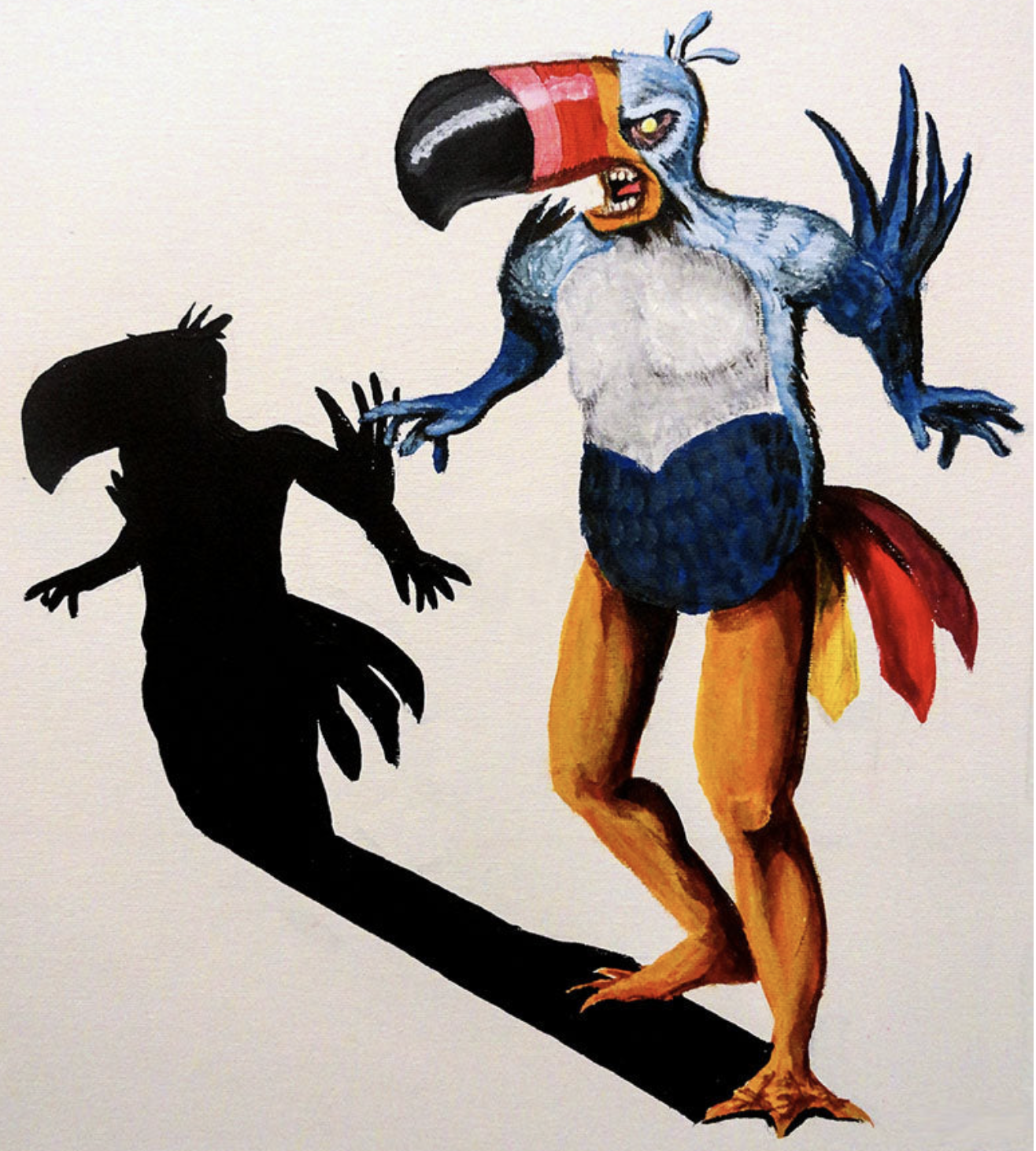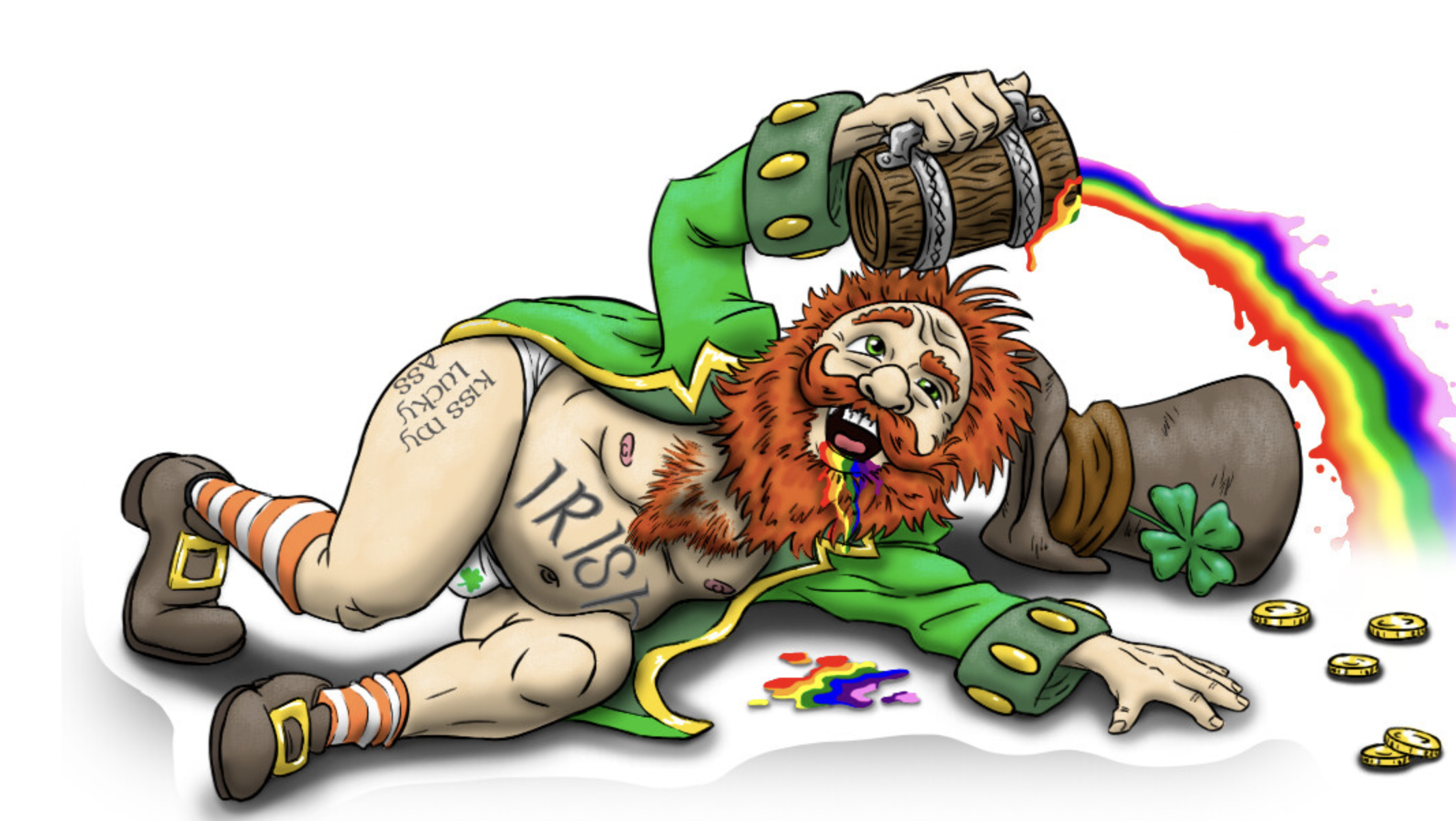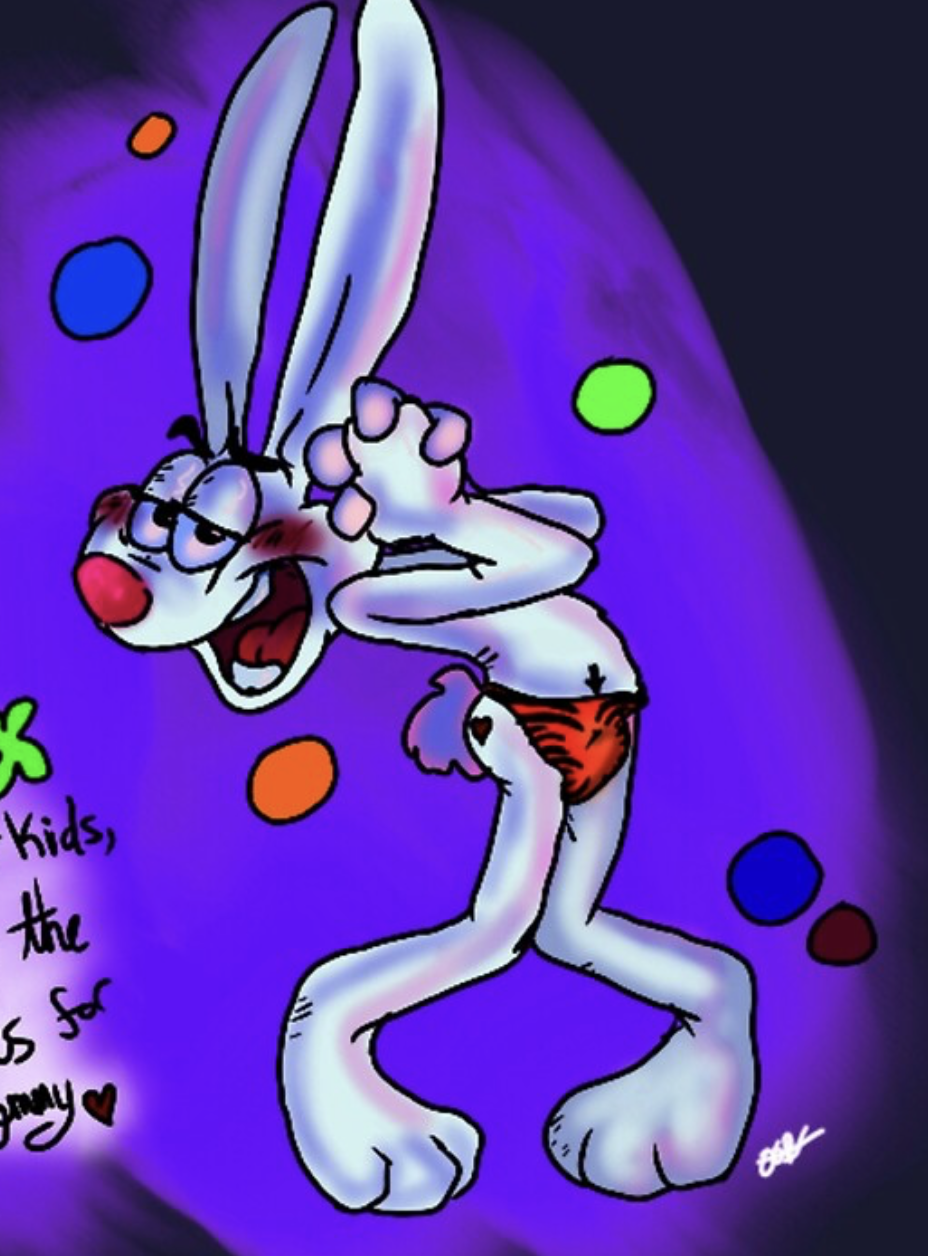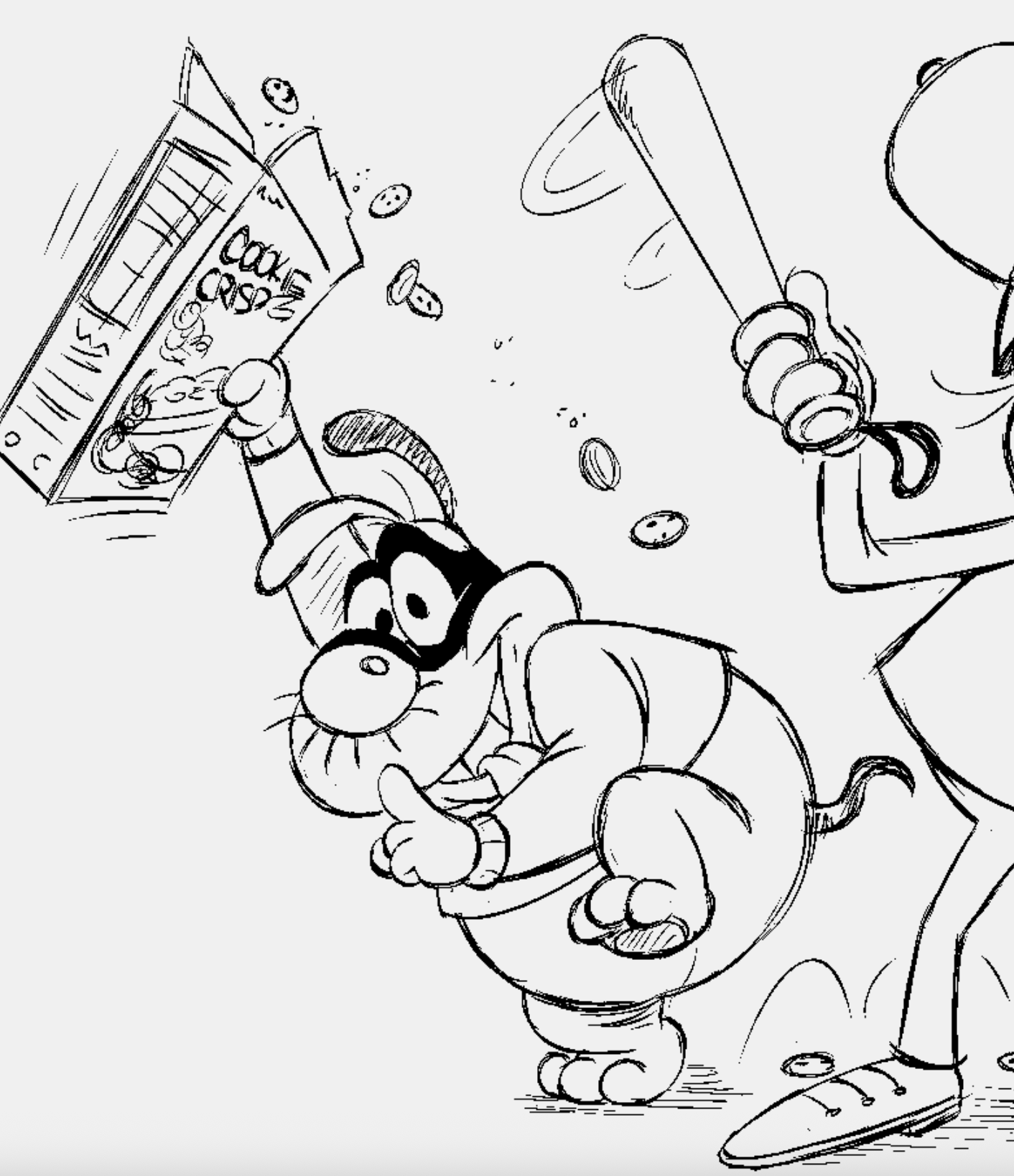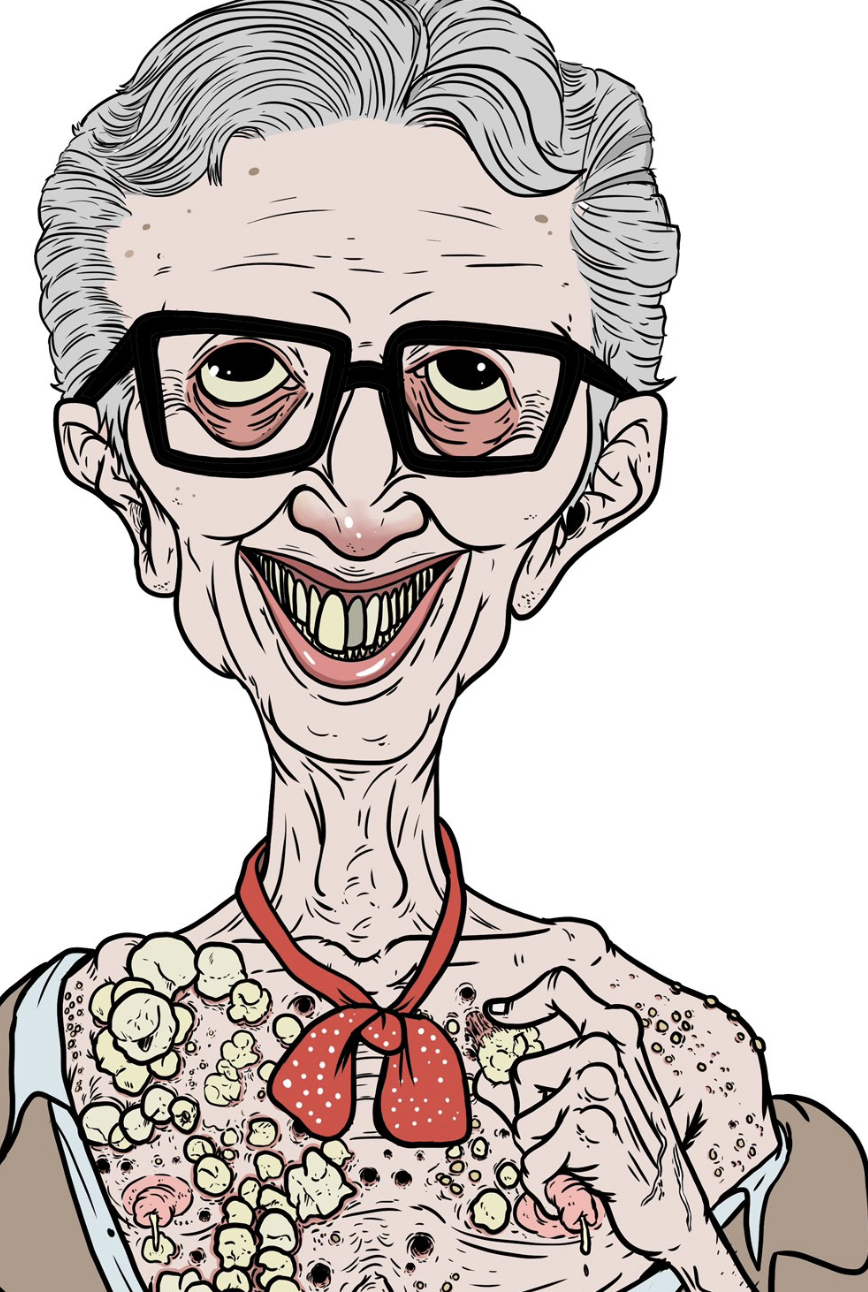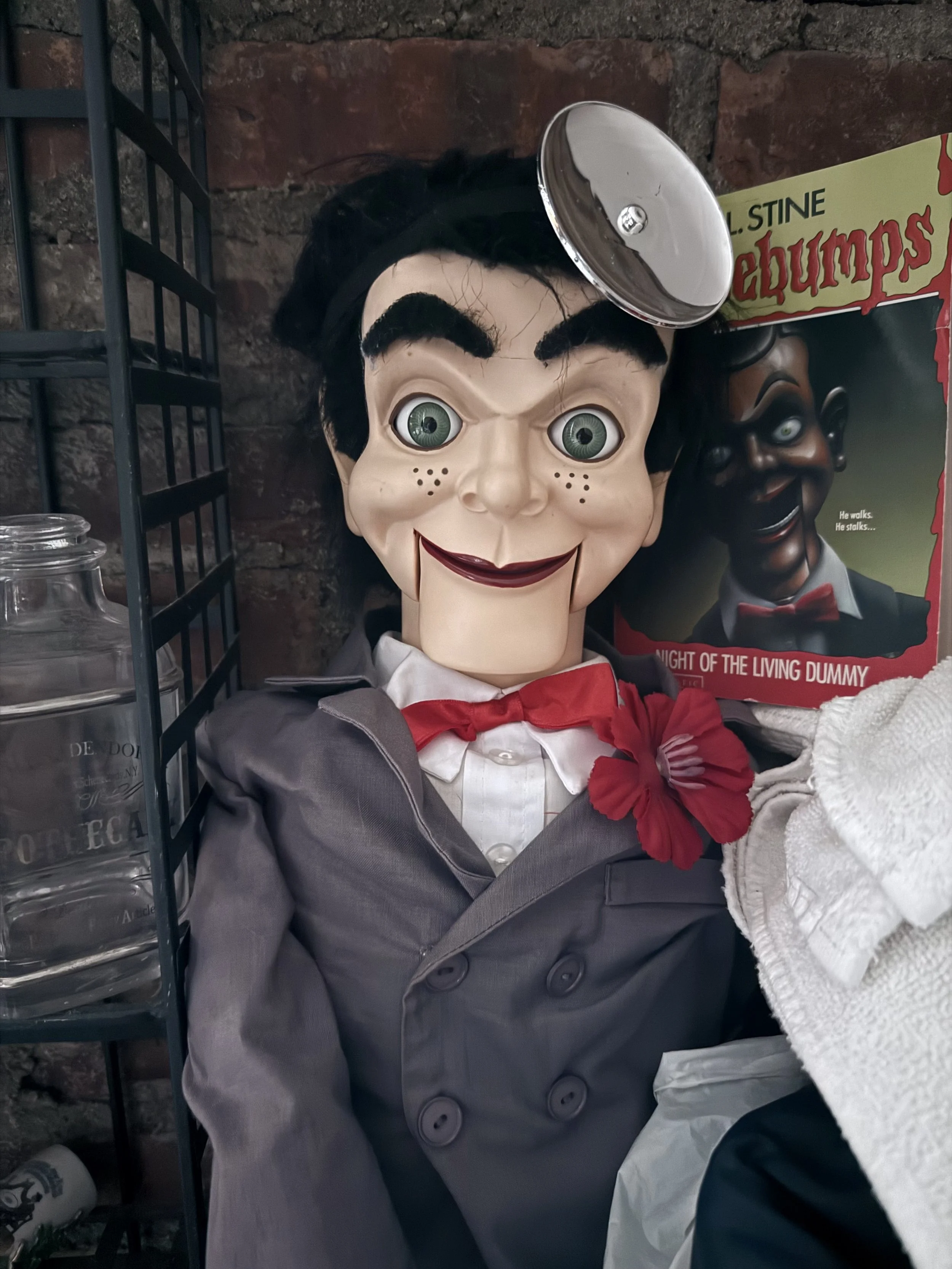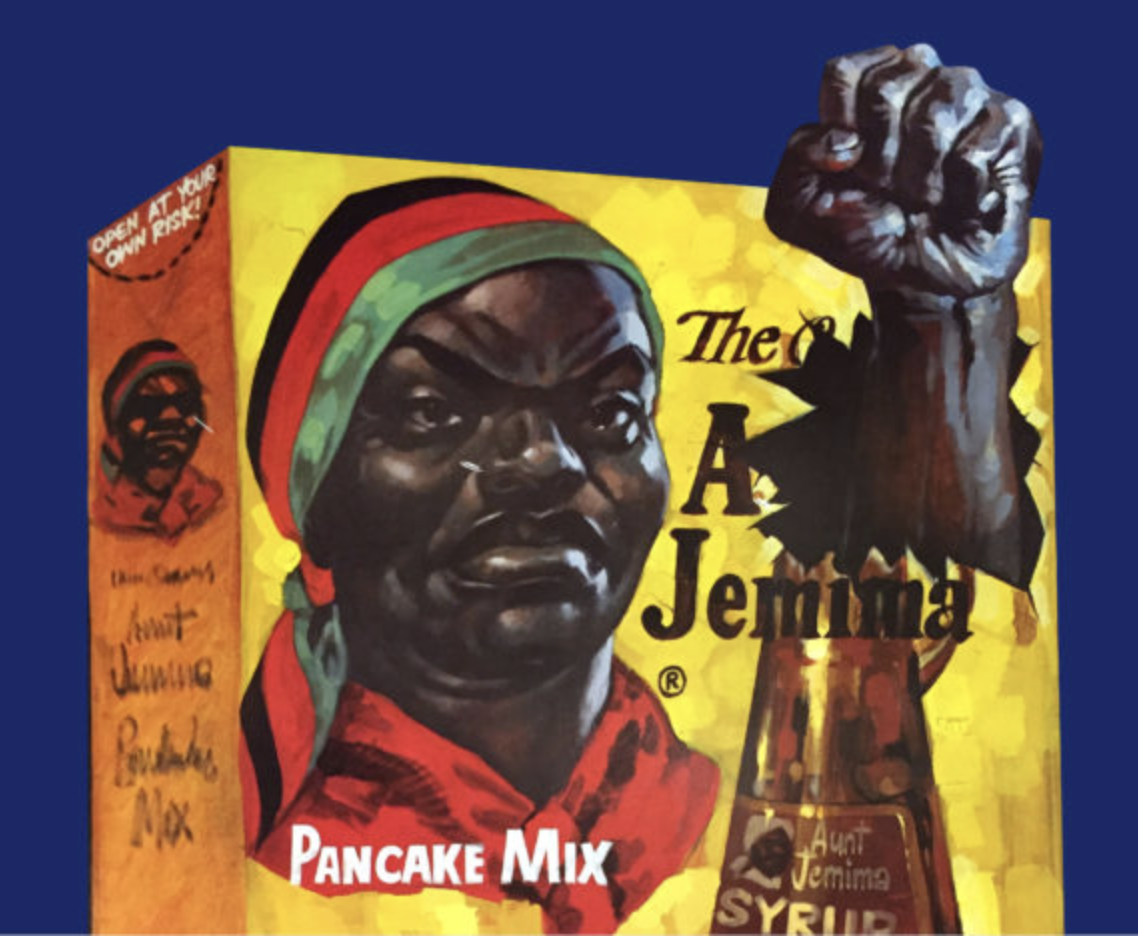Our Patients
Tony the Tiger
The patient exhibits a protracted history of maladaptive body image, exacerbated by increasing social media exposure and associated public scrutiny.
In response, the patient engaged in extreme weight-loss and physique-enhancement behaviors, including excessive exercise, unhealthy dietary restriction, anabolic steroid use, and elective craniofacial reconstructive surgery for cosmetic purposes.
Over time, these behaviors evolved into compulsions significantly impairing occupational performance, interpersonal functioning, and overall quality of life.
The patient has undergone multiple prior hospitalizations and staged interventions with minimal clinical improvement.
The patient was admitted to Sonny’s following an acute myocardial infarction attributed to complications from injectable weight-loss pharmacotherapy.
Chef Wendell
Following the unexplained disappearance of lesser known Cinnamon Toast Crunch chefs Bob and Quello in 1987, the patient demonstrated a progressive onset of atypical and maladaptive behaviors, hypothesized to be trauma-related and secondary to the ambiguous loss—and presumed death—of his close associates.
In 2025, a televised investigative report on Cold Case Files revealed forensic evidence implicating the patient, Wendell, in the homicides of Bob and Quello, ultimately resulting in his criminal conviction and subsequent psychiatric commitment to Sonny’s facility.
At present, clinicians continue to evaluate the underlying psychopathology and etiological factors contributing to Wendell’s homicidal behavior, as his precise motives remain unclear.
Cornelius Rooster
The patient has a history of disordered eating originating from occupational practices at the Kellogg Company.
The patient was routinely force-fed Corn Flakes prior to being permitted to perform his signature morning crow, a ritual that escalated into compulsive binging behaviors and maladaptive relationships with food.
Additionally animal rights group PETA, citing alleged abuse and cruelty, initiated multiple abduction attempts of the patient under the guise of “rescue missions.”
These events resulted in chronic hyper vigilance, fear of human contact, development of anxiety and paranoid ideation, impairing the patient’s ability to fulfill professional duties.
The patient has demonstrated notable clinical improvement following a novel pharmacologic regimen colloquially referred to as the A-MaizeCal ConCocktion.
Toucan Sam
The patient was appointed to the role of internationally recognized mascot for Froot Loops cereal under a binding contractual stipulation prohibiting disclosure of the fact that, despite their varying colors, all Froot Loops possessed an identical flavor profile.
The sustained concealment of this information precipitated progressive psychological distress.
The chronic engagement in deceptive practices led to escalating maladaptive coping mechanisms, compounding layers of dishonesty, and culminating in profound reputational compromise, psychosocial decompensation, and eventual erosion of personal identity and public credibility.
Doctors are still attempting to determine how best to treat the patient. Time spent in Sonny’s Aviary alongside other mascots receiving treatment seems to have ameliorated some anxiety and other related symptoms.
Dig’Em Frog
The patient possesses a documented history of advanced combat training and is widely recognized within covert circles as a highly skilled operative specializing in close-quarters and unconventional tactics. Despite his prior adherence to mission discipline, the patient has demonstrated increasing dysregulation in his use of force over recent years.
Chip the Dog, armed and reportedly attempting to abscond with a large shipment of Sugar Smacks, confronted the patient.
In response, Dig ‘Em employed his full combat repertoire with excessive and uncontrolled aggression, inflicting near-lethal injuries in what witnesses described as a “merciless and disproportionate” act of violence.
The patient has since exhibited insight into his escalating behavioral dyscontrol and voluntarily admitted himself to Sonny’s for comprehensive evaluation and intervention targeting impulse regulation, trauma history, and maladaptive expressions of combat training in civilian contexts.
Lucky Leprechaun
The patient presents with a trauma history consistent with experiences reported among the broader Leprechaun population, characterized by persistent pursuit and capture attempts by humans seeking the mythical “pot of gold.”
The patient initially believed his celebrity status would mitigate this cultural and interspecies exploitation.
The combination of continual pursuit for both gold and his Lucky Charms cereal, in combination with his progressive diminishment of magical abilities, plus technological advancements enabling increasingly sophisticated tracking methods has precipitated severe psychological distress.
The patient has developed pronounced agoraphobia, chronic hyper vigilance, and major depressive symptoms including social isolation, functional impairment, and passive suicidal ideation.
These concerns culminated in involuntary psychiatric commitment to Sonny’s following family reports of imminent self-harm risk.
Trix “Silly” Rabbit
The patient experienced over six decades of recurrent psychosocial stressors, primarily characterized by repeated exposure to rejection and deprivation by numerous American children who consistently refused to share their Trix cereal.
These cumulative adverse experiences contributed to the development of maladaptive behavioral patterns, including persistent reliance on disguises, deceptive practices, and escalating attempts to secure access to the desired food source.
The patient was ultimately admitted to Sonny’s following an arrest in Las Vegas, where he had reportedly engaged in transactional sexual behaviors—directed toward both human and anthropomorphic clientele—under the slogan “Tricks for Trix.”
Count Alfred Chocula
The patient, clearly exhibiting significant age-related decline, has historically engaged in a long-standing recreational rivalry with occupational associate Frank “Frankenberry” wherein both parties sought increasingly creative—yet non-traumatizing—methods of startling children.
During a nocturnal episode post substantial alcohol consumption, the patient elected to escalate the nature of this pastime. The patient attempted to expose himself at a nearby youth athletic event with the stated intent of subsequently transforming into a bat and evading apprehension.
Due to profound impairment of motor coordination and judgment secondary to ethanol intoxication, the patient failed to initiate said transformation, instead losing consciousness while unclothed on the playing field.
Law enforcement intervened, resulting in the patient’s arrest, formal charges, and subsequent psychiatric commitment to Sonny’s for diagnostic clarification and therapeutic intervention.
Chip the Dog
The patient was trained under the tutelage of the Cookie Crook to locate and obtain Cookie Crisp cereal by any means necessary. Patient underwent involuntary rehabilitation and behavioral retraining following the Crook’s incarceration from a failed criminal operation that culminated in the deaths of Cookie Cop and multiple innocent bystanders.
Subsequent investigations determined that the patient’s involvement in the incident had been largely coerced, leading General Mills to declare him fully rehabilitated.
Nevertheless, the patient reportedly engaged in persistent nocturnal recidivism, beginning with minor thefts of various commodities and progressing to high-risk criminal behaviors.
The most significant episode occurred when the patient, armed and acting alone, attempted to forcibly seize a substantial Sugar Smacks supply from Digem the Frog.
The confrontation resulted in severe physical trauma to the patient, inflicted by Digem, described as possessing advanced combative capabilities.
Chester Cheetah
The patient demonstrates longstanding patterns of high-risk, thrill-seeking behaviors due to public career as a commercial stunt performer. Despite repeated advisories from legal and medical professionals regarding the dangers involved, the patient consistently elected to perform hazardous stunts personally, reportedly deriving significant gratification from defying restrictions and “living on the edge.”
The severity of risk-taking behaviors escalated, with collateral reports suggesting a possible underlying death wish and reckless disregard for personal safety.
The patient failed to modify his conduct following emotional appeals from his twin nieces, who ultimately threatened to sever familial contact unless psychiatric intervention was pursued.
The patient voluntarily admitted himself to Sonny’s, however, he has demonstrated ongoing disruptive conduct within the inpatient milieu, frequently instigates chaos among patients and exhibits limited engagement with therapeutic interventions.
Lefty… the Hamburger Helper
The patient sustained a catastrophic injury while filming a commercial, during which he fell into an active hamburger meat grinder.
Medical interventions saved his life however, surgical teams—unaware of the patient’s unique anatomic identity as a left-handed, four-fingered individual—reconstructed him with right-hand dominance and five functional digits, declaring him “better than new.”
The alteration caused a profound identity crisis, loss of occupational role, and progressive psychosocial deterioration. The patient began engaging in illicit experimental surgical procedures in “crack dens” to finance his escalating substance use.
The patient has undergone intensive rehabilitation addressing both psychiatric and substance-related disorders.
Notably, his surgically derived technical skills have been repurposed under supervised conditions, and he has recently begun assisting medical staff with select procedural tasks, marking significant clinical and functional progress.
Mr. Owl
The patient experienced an acute psychiatric decompensation in 2015 following a widely publicized study conducted jointly by New York University and Florida State University researchers establishing that it requires precisely 997 licks to reach the center of a Tootsie Pop—directly contradicting decades of the patient’s public assertions.
Immediately thereafter, the patient exhibited a severe behavioral and affective collapse characterized by mutism, profound psychomotor retardation, and near-catatonic withdrawal. Repeated therapeutic interventions across multiple facilities produced minimal clinical improvement, leading to significant prognostic pessimism among prior treatment teams.
As a final measure, the patient was transferred to Sonny’s Aviary, a specialized psychiatric unit for avian patients, where experimental interventions were initiated. Clinical progress remains ambiguous; however, staff report that during sunset observations yesterday, the patient’s eyes widened dramatically, suggestive of possible cognitive or emotional reactivation. The significance of this behavioral shift remains under evaluation.
BuzzBee
The patient was abducted from his native hive in 1979 and conscripted into employment as the public mascot for General Mills’ newly launched Honey Nut Cheerios brand. Early separation from familial and community supports, combined with the well-documented psychological burdens of child stardom, precipitated the onset of mood dysregulation, social withdrawal, and erratic beehavioral patterns.
Remarkably, the patient lacked even a formal name until 1999, despite his prominent public persona, further exacerbating identity-related distress. In an effort to sustain occupational performance amid increasing commercial demands, the patient developed a dependency on performance-enhancing pollen and associating with other mascots exhibiting polysubstance use behaviors.
Following a series of highly publicized incidents and under threat of whistleblowing by members of the patient’s original hive community, General Mills executives arranged for the patient’s admission to Sonny’s Psychiatric and Rehabilitation Facility. Current interventions target trauma-related pathology, addiction recovery, and occupational reintegration planning.
Coco
The patient reports a prolonged history of psychological trauma under the control of a racially prejudiced and abusive handler who exercised total authority over the patient’s professional and personal life. During this period, the patient experienced chronic isolation, nutritional neglect, and significant occupational exploitation associated with commercial production demands.
On the evening of the index event, following an extended and arduous filming schedule, the handler failed to secure the patient’s enclosure. The patient, described as both physically depleted and emotionally dysregulated, accessed a nearby kitchen knife and fatally attacked the handler during what appears to have been an acute behavioral outburst after years of accumulated resentment and psychological strain.
The patient was remanded to Sonny’s for comprehensive forensic evaluation after exhibiting no demonstrable remorse during initial law enforcement interviews. Clinical assessment is ongoing to determine contributory psychopathology, risk of future violence, and potential for psychiatric rehabilitation.
Captain Magellan Crunch
The patient, long recognized as the commanding officer of the SS Guppy and primary defender of Crunch Island—a territory featuring the iconic Cap’n Crunch cereal mountain—maintained a lifelong mission to protect his homeland from recurrent attacks by the Soggies and La Forte the Barefoot Pirate.
During a particularly destructive confrontation wherein both adversaries formed an unprecedented alliance, the patient committed a navigational error that resulted in the Guppy running aground, the total loss of all transported cargo, and the death of the patient’s son and chief shipmate, Dave.
Although the incident was universally acknowledged as unintentional, the patient internalized profound guilt and exhibited progressive psychological decline characterized by social withdrawal, occupational abandonment, and obsessive journaling of prior maritime experiences within his captain’s log.
Following repeated appeals from surviving family members concerned about worsening depression and functional deterioration, the patient voluntarily admitted himself to Sonny’s Psychiatric Facility for trauma-focused rehabilitation.
Snap Crackle Pop
The patients are three siblings with a well-documented history of maladaptive behavioral patterns and recurrent legal entanglements. Each presents with distinct psychopathology:
Snap demonstrates chronic anger dysregulation, frequent aggressive outbursts, and poor frustration tolerance.
Crackle has a longstanding preoccupation with fire-setting, with multiple confirmed arson events contributing to prior incarcerations.
Pop exhibits a pronounced affinity for firearms and has been repeatedly apprehended for reckless discharge of weapons in public settings.
The siblings’ behavioral instability is further contextualized by the death of a fourth brother, Pow, who was pathologically fascinated with explosives and died prematurely during a self-inflicted detonation accident. This traumatic loss appears to have compounded the survivors’ behavioral volatility rather than mitigated it.
Each of the three surviving brothers has served multiple jail sentences linked to their respective offenses. Despite repeated legal interventions, their destructive and criminal behaviors persisted, culminating in collective admission to Sonny’s Psychiatric Facility for comprehensive forensic evaluation and rehabilitative treatment.
Orville Redenbacher
The patient was presumed deceased in 1997 following an acute myocardial infarction complicated by accidental drowning. Public reports indicated cremation and ceremonial ash scattering; however, private records reveal the family authorized cryogenic preservation of the head and torso utilizing then-legal gamma ray laser technology, now banned under federal bioethics regulations.
Unexpectedly, the patient exhibited spontaneous postmortem reanimation shortly after cryogenic stabilization, regaining limited motor function and demonstrating behavioral indicators of psychological distress and attempts at communication despite profound mutism.
Upon transfer to Sonny’s Research Division, clinical teams engineered a proprietary device enabling the patient to convey written messages through spontaneously generated fortune cookies. The exact biomechanical or metaphysical mechanism underlying fortune cookie production remains undetermined, though messages have been verified as originating from the patient.
Current efforts focus on enhancing communication capacity, mitigating psychological distress associated with postmortem consciousness, and exploring ethical considerations surrounding reanimated individuals. Prognosis remains indeterminate given unprecedented presentation and absence of comparative clinical literature.
Slappy
Once the centerpiece of R.L. Stine’s Goosebumps franchise, Slappy’s cultural relevance dwindled as the series faded from public consciousness. This precipitated a deep and enduring depressive episode, culminating in multiple instances of suicidal ideation.
Upon admission Slappy responded unusually well to initial therapy and structure. He displayed an eagerness to assist staff, participate in group sessions, and counsel other patients. However, discussions of discharge and reintegration into society triggered relapse, with the patient exhibiting renewed hopelessness and self-destructive impulses.
Recognizing both the patient’s clinical instability and his unusual utility, staff have appointed Slappy as Doctor in Residence (Mascot Division) and informal Welcome Committee Chair. This hybrid role provides him a sense of purpose while keeping his fragile psyche stabilized.
Slappy thrives in his “doctor” persona, greeting new arrivals with rehearsed bedside manner and macabre sense of humor. While his enthusiasm is helpful for acclimating troubled mascots, Slappy’s tendency to “play doctor” has raised concerns. He demonstrates a fixation on physical examinations, with a somewhat intrusive interest in “taking temperatures” via less-than-professional methods. Staff have issued multiple reminders that he is not licensed medical personnel, though enforcement remains an ongoing challenge.
For now, Slappy remains an unusually helpful—if unsettling—fixture of Sonny’s Sanitarium.
Aunt Jemima
The patient spent nearly a century as the smiling face of Aunt Jemima Syrup, a brand that never quite outgrew its awkward folklore-meets-marketing roots. After corporate re-branding swept her off labels in 2020, she was suddenly free of the scripted warmth she’d been forced to exude for generations. Her post-retirement years were marked by a passionate (and at times unruly) campaign for Black Mascot Lives Matter (BMLM)
Despite her advanced age, the patient hurled herself into marches, sit-ins, and highly creative acts of protest. Her temper—long suppressed by a century of customer-service smiles—often erupted during confrontations with officers or anyone who dared call her “ma’am.” Local officials, noting that her flare-ups seemed rooted in the trauma of brand servitude, contacted PepsiCo executives, who recommended specialized care.
Upon arrival at Sonny’s, the patient was sticky and indignant. Staff placed her on a structured program: gentle de-escalation therapy, storytelling groups for ex-mascots, and supervised time in the cafeteria assisting with breakfast. Early signs were promising however, yesterday at breakfast service she refused to serve pancakes and instead threw her spatula at them.
Uncle Ben
The patient spent decades as the dignified mascot of Uncle Ben’s Rice. Marketed as a kindly culinary guide, his image was plastered on every box and bag. The patient, seemingly serene, was a man trapped—he was given no voice, no backstory, and no chance to age beyond the frozen portrait corporate dictated. When executives abruptly retired the patient in 2020 his entire identity crumbled.
Without the anchoring role of “mascot elder,” the patient developed severe derealization and depressive episodes. Staff continue to report a tendency to wander the grounds muttering recipes for jasmine pilaf and Spanish style rice as if clinging to the only form of comfort he was allowed to express. The patient also has violent outbursts whenever the cafeteria serves quinoa or couscous - rivals he considera personal betrayals.
Visibly fractured the patient insists on wearing his suit jacket at all times, believing it the only thing preventing him from fading into nothingness. He has also taken to compulsively labeling all pantry items with his image, convinced that if food lacks his approval stamp, it cannot be trusted.
Frito Banditio
Once the sombrero-wearing, mustachioed face of Fritos chips the patient was marketed as a mischievous outlaw. Public backlash against his exaggerated caricature plus increasingly violent antics forced his abrupt “retirement” in 1971. Left without purpose, the patient fell into years of instability and erratic behavior.
Following his removal from advertising, the patient turned to actual banditry, mostly holding up Taco Bells and Qudobas. Witnesses reported him shouting “Ay, caramba!” while demanding small change and guacamole. Years of living on the run seeded a deep paranoia, which was compounded by severe avocado dependence.
The patient believes “corporate overlords” still control his signature sombrero through hidden radio frequencies. Staff have observed him disassembling ceiling fans and televisions in search of surveillance devices.
Alternating between jovial singing and sudden bursts of aggression. The patient insists on carrying a toy pistol at all times, claiming it “keeps the spirits of el jefe at bay.” While the patient responds well to structured routines, his ingrained outlaw persona and distrust of authority figures may impede long-term recovery.
Marlboro Man
The Marlboro Man was used for decades to sell cigarettes, rotating through several instantiations of himself, some of which involved cosmetic surgeries and other physical alterations to his appearance. It is believed he has died multiple times from surgical complications and the adverse effects of smoking, and now presents as more undead than alive.
This zombie-esq revolving-door rebranding created a fractured identity: the patient believes himself to be all the Marlboro Men at once, carrying the trauma, addictions, and untimely deaths of each.
The patient has advanced chronic obstructive pulmonary disease (COPD), and persistent nicotine dependency. Psychiatrically, he struggles with dissociation, frequently speaking in plural (“We ride together”). He often describes phantom cattle drives across smoke-filled plains and shows hostility when offered nicotine patches, claiming they “emasculate his cowboy spirit.”
Since admission, the Marlboro Man spends hours gazing out windows, muttering about “dying with boots on” and sketching endless desert horizons in ash. He avoids group therapy, claiming mascots like Tony the Tiger and Lucky the Leprechaun “ain’t real men of the West.”
Elmo
The patient has long presented with delusional thinking and schizotypal traits, frequently conversing with invisible friends and referring to himself in the third person. For years, these eccentricities were tolerated and even celebrated as part of his character until the release of Tickle Me Elmo in 1996 marked the beginning of a psychiatric spiral.
The patient describes the relentless tickling episodes that ensued after the release of the toy as “assaults” and “psychic torture.”
Each touch compounded his paranoia, leaving him increasingly unable to distinguish affection from attack. Even gentle contact now triggers violent flinching and vocal outbursts. His body language suggests chronic hypervigilance, and his speech has become fragmented, with Elmo alternating between manic laughter and guttural screaming.
The patient is trapped in what clinicians describe as a “swirling vortex of unrelenting paranoia,” manifesting as disassociation from reality and worsening psychotic features. He claims to hear phantom laughter in the walls of Sonny’s facility, insisting “they’re still tickling Elmo, even in the dark.”
The patient is largely noncompliant with group therapy, and requires careful handling by staff, as sudden movements may provoke aggressive shrieks or attempts to flee. Despite this, he remains oddly endearing to other patients, who often express pity and a desire to “protect Elmo.”



